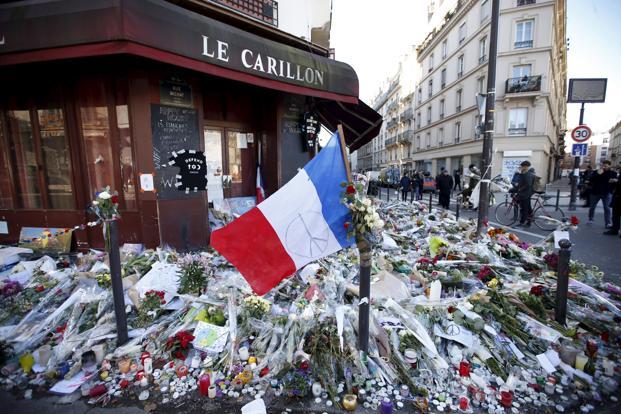By: Victoria Barker
On Oct. 9, 2012 a fifteen-year-old Pakistani girl made global headlines when the Taliban failed an assassination attempt against her. One year later Malala Yousafzi has become the international face of equal educational opportunities. A recent nominee for the Noble Peace Prize, Malala has recovered from the attack and become a voice for girls and women worldwide, speaking in front of the United Nations Assembly to call for worldwide access to education. Stories such as Malala’s garner international attention, but we often overlook the cases of women who are perpetrators of terrorism, not just its casualties.

Tanja Nijmeijer, a Dutch woman who came to Colombia in the 1990s as a teacher is an example of such a woman. She joined The Revolutionary Armed Forces of Colombia (FARC), the military wing of the communist party, when she saw the apparent oppression of the Colombian people by the government. FARC has been present in Colombia since 1964 and is most well known for its use of violence and kidnappings in order to make an anti-imperialist statement and gain money for arms. FARC was created in response to the Colombian Civil War that last from 1948-1958 and resulted in the deaths of thousands of peasants. In a BBC News interview, Nijmeijer says, “I chose to do politics in a country where doing politics implies violence.” She did not think she could have a good life in the Netherlands having seen the oppression in Colombia. She felt as though she had to do something and FARC seemed like the most viable option to combat the despotism in Colombia.
Besides the thousands of people who have been killed and the millions who have been displaced during the ongoing fighting between the Colombian security forces and FARC rebels, the organization also uses kidnappings for economic reasons. Nijmeijer says that the international attention she has received makes her feel “realized,” saying, “I feel like I am showing my solidarity with people who have been very, very badly treated by the Colombian government and I am proud of it.” She thinks that if the peace talks come to fruition this communist movement will finally be able to fight for their ideology without rifles. Although Nijmeijer’s work with FARC seems largely political, it began with a desire to combat the oppression in Colombia; she saw violence as the only way to effectively combat the violence that was being inflicted by the government.

Another more recent case of a woman in terrorism involves a British woman, Samantha Lewthwaite, who is thought to have been one of the organizers of the Kenyan Mall massacre last month. Lewthwaite became known as the “White Widow” after her husband, Jermaine Lindsay, perpetrated the 7/7 suicide subway bombings in London in 2005. The Kenyan authorities want Lewthwaite for various terror-related charges; it is believed that she is linked to the al-Shabaab terrorist group. Authorities have been looking for Lewthwaite for well over a year to no avail, but did find her diary during a raid of her former home in Mombasa, Kenya. The most telling part of the diary is what Lewthwaite says about her children. She hopes that they will emulate their father and says, “both [children] agreed to one [thing] of wanting to be Mujahid.” (Mujahid are Islamic military fighters.) She wants her daughter as well as her son to continue in the footsteps of herself and her late-husband.
In Russia, women are also fighting back to avenge the deaths of their husbands and sons. Women in the Caucasus region of the country have also been known to become part of rebel groups, most notably the Chechen suicide-bombers. Known as “Black Widows” many of these women were married to Chechen men killed by Russian security forces. On May 25, 2013 a female suicide bomber blew herself up in Dagestan, Russia killing one person and wounding many more. Madina Alieva, 25, was the widow of two Chechen rebels who had been killed by Russian security forces — her first husband was killed in 2009 and the second was killed in 2012. It is believed that rebel groups convince “Black Widows” that suicide bombing is a way for them to be reunited with their slain relatives “beyond the grave.” The “Black Widows” are also thought to have been involved in the infamous 2002 Moscow theatre hostage crisis as well as the 2010 bombings of the Moscow subway. According to The Guardian, the Moscow theatre bombing was the first of many attacks on Russian governmental structures that year, and the use of women allowed them to evade the “scrutiny of the Russian police.” It appears that the female terrorists in Russia have a different motivation behind their acts than their male counterparts: the women are seeking to avenge the deaths most dear to them while the men are trying to spread an ideology.

What drives women to terrorism? It seems as though the motivation for terrorism is different for men and women. What drives a Dutch woman teaching English in Colombia to join a notoriously ruthless rebel group? What drives a mother of four from Scotland to organize a massacre at a Kenyan mall? What drives widows from southern Russia to blow themselves up in subways? The reasons that these women have perpetrated such violence, seems quite different than that of many male terrorists. These women did not start out with a political or religious identity. Nijmeijer was devastated by the poverty and oppression she saw in Colombia. Lewthwaite followed in the footsteps of her slain husband and has since raised her children to do the same. The “Black Widows” are seeking revenge against people that killed their husbands, sons, and fathers and are attempting to be reconnected with them in death.
Until we can finally understand the reasons beyond terrorism, perhaps we need to combat evil and oppression with the educational opportunities for which sixteen-year-old Malala advocates. Do we combat evil by just trying to “stamp it out” like leaders such as Vladimir Putin have advocated for? This approach doesn’t seem to have worked very well over the past few decades. Malala was a victim of terrorism, just like the aforementioned women. However, she responded to her misfortunes with an initiative to provide more opportunities for women and girls. Maybe that is the approach that we too, as a global community, need to take.

